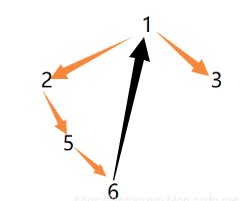本系列坚持格式:1个抖机灵算法+2个较简单但是天秀的算法+1个较难天秀算法。
bogo排序
Bogo排序(Bogo-sort),又被称为猴子排序,是一种恶搞排序算法。
将元素随机打乱,然后检查其是否符合排列顺序,若否,则继续进行随机打乱,继续检查结果,直到符合排列顺序。
Bogo排序的最坏时间复杂度为O(∞),一辈子也不能输出排序结果,平均时间复杂度为O(n·n!)。
这让我想到了另一个理论:猴子理论,只要让一只猴子一直敲打计算机,理论上会有一天,它能敲出一本圣经出来,但是这个概率小到宇宙毁灭也很难敲出来。。
真的不知道这个排序应该叫做天才还是垃圾哈哈哈,但是闲的没事的我就把他实现出来了。
public class Main {
public static void main(String[] args) {
int[] arr = { 9,8,7,6,5,4,3,2,1};
System.out.println("排序次数" + bogo(arr));
for (int i : arr) {
System.out.print(i + " ");
}
}
public static int bogo(int[] arr) {
int count = 0;
while (!isOrdered(arr)) {
shuffle(arr);
count++;
}
return count;
}
// 判断是否有序方法
public static boolean isOrdered(int[] arr) {
for (int i = 1; i < arr.length; i++) {
if (arr[i - 1] > arr[i]) {
return false;
}
}
return true;
}
// 随机排序方法
public static void shuffle(int[] arr) {
int temp;
for (int i = 0; i < arr.length; i++) {
int j = (int) (Math.random() * arr.length);
temp = arr[i];
arr[i] = arr[j];
arr[j] = temp;
}
}
}
9是中国最大的数字嘛,我就把数组长度设为9,结果平均排序次数要60万次,不知道我的运气怎么样哈哈,你们也试试吧?
然而,有个看似笑话的方法声称可以用O(n)实现Bogo排序,依照量子理论的平行宇宙解释,使用量子随机性随机地重新排列元素,不同的可能性将在不同的宇宙中展开,总有一种可能猴子得到了正确的顺序,量子计算机找到了这个宇宙后,就开始毁灭其他排序不成功的宇宙,剩下一个观察者可以看到的正确顺序的宇宙。
如果想要迈出这个看似荒诞,但令人无比兴奋的"高效算法"的第一步,请先证明"平行宇宙解释"的正确性。
位运算
关于位运算有很多天秀的技巧,这里举一个例子。

给定一个非空整数数组,除了某个元素只出现一次以外,其余每个元素均出现两次。找出那个只出现了一次的元素。
说明:你的算法应该具有线性时间复杂度。 你可以不使用额外空间来实现吗?
示例 1:
输入: [2,2,1]输出: 1
示例 2:
输入: [4,1,2,1,2]输出: 4
思路:拿map,set,都不符合要求,那怎么办呢?
我们知道什么数字和自己异或,都等于0.
什么数字和0异或,都等于它本身,
异或又符合交换律
所以全部异或一遍,答案就是那个出现一次的数字。
class Solution {
public int singleNumber(int[] nums) {
int ans = 0;
for(int i :nums)ans ^= i;
return ans;
}
}有没有被秒了?
打擂台
给定一个大小为 n 的数组,找到其中的多数元素。多数元素是指在数组中出现次数大于 ⌊ n/2 ⌋ 的元素。
你可以假设数组是非空的,并且给定的数组总是存在多数元素。
把狂野般的思绪收一收,咱们来看看最优解。
class Solution {
public int majorityElement(int[] nums) {
int count = 0;//当前答案出现的次数
Integer candidate = null;//答案
for (int num : nums) {
if (count == 0) candidate = num;
count += (num == candidate) ? 1 : -1;
}
return candidate;
}
}我来解释一下策略:记录当前的答案candidate ,记录count。这时,我们遍历了一个新的数字,如果和candidate 一样,我们就让count+1,否则让count-1.如果count变成了0,那candidate 就下擂台,换新的擂主(数字)上,也就是说把candidate 更新成新的数字,count也更新成1.
最后在擂台上的一定是答案。
肯定有人怀疑这个做法的正确性吧?我就来说一下它为啥对?
首先,我们想像一下对最终隐藏答案ans最不利的情况:每个其他数字全部都打擂这个答案ans,那ans的count最后也会剩1,不会被打下来。
正常情况呢?其他数字还会互相打擂,这些数字如此“内耗”,又怎么能斗得过最终答案ans呢?对不对?
morris遍历
通常,实现二叉树的前序(preorder)、中序(inorder)、后序(postorder)遍历有两个常用的方法:一是递归(recursive),二是使用栈实现的迭代版本(stack+iterative)。这两种方法都是O(n)的空间复杂度(递归本身占用stack空间或者用户自定义的stack),我分别给出一个例子
递归:
void PreorderTraversal( BinTree BT )
{
if(BT==NULL)return ;
printf(" %c", BT->Data);
PreorderTraversal(BT->Left);
PreorderTraversal(BT->Right);
}非递归:
*p=root;
while(p || !st.empty())
{
if(p)//非空
{
//visit(p);进行操作
st.push(p);//入栈
p = p->lchild;左
}
else//空
{
p = st.top();//取出
st.pop();
p = p->rchild;//右
}
}为啥这个O(n)的空间就是省不掉呢?因为我们需要空间来记录之前的位置,好在遍历完了可以回到父节点。所以这个空间是必须的!如下图:

比如我们遍历2,想遍历4,这时候我们要保证遍历完4以后,还能回到2,我们好去继续遍历5等等结点,所以必须花空间记录。
但是,还就有这么一种算法,能实现空间O(1)的遍历,服不服。
你们可能会问,你刚说的,必须有空间来记录路径,怎么又可以不用空间了呢?
这就是morris遍历,它其实是利用了叶子节点大量的空余空间来实现的,只要把他们利用起来,我们就可以省掉额外空间啦。
我们不说先序中序后序,先说morris遍历的原则:
1、如果没有左孩子,继续遍历右子树,比如:

这个2就没有左孩子,这时直接遍历右孩子即可。
2、如果有左孩子,找到左子树最右节点。
比如上图,6就是2的最右节点。
1)如果最右节点的右指针为空(说明第一次遇到),把它指向当前节点,当前节点向左继续处理。
修改后:

2)如果最右节点的右指针不为空(说明它指向之前结点),把右指针设为空,当前节点向右继续处理。
这就是morris遍历。
请手动模拟深度至少为4的树的morris遍历来熟悉流程。
下面给出实现:
定义结点:
public static class Node {
public int value;
Node left;
Node right;
public Node(int data) {
this.value = data;
}
}先序:(完全按规则写就好。)
//打印时机(第一次遇到):发现左子树最右的孩子右指针指向空,或无左子树。
public static void morrisPre(Node head) {
if (head == null) {
return;
}
Node cur1 = head;
Node cur2 = null;
while (cur1 != null) {
cur2 = cur1.left;
if (cur2 != null) {
while (cur2.right != null && cur2.right != cur1) {
cur2 = cur2.right;
}
if (cur2.right == null) {
cur2.right = cur1;
System.out.print(cur1.value + " ");
cur1 = cur1.left;
continue;
} else {
cur2.right = null;
}
} else {
System.out.print(cur1.value + " ");
}
cur1 = cur1.right;
}
System.out.println();
}morris在发表文章时只写出了中序遍历。而先序遍历只是打印时机不同而已,所以后人改进出了先序遍历。至于后序,是通过打印所有的右边界来实现的:对每个有边界逆序,打印,再逆序回去。注意要原地逆序,否则我们morris遍历的意义也就没有了。
完整代码:
public class MorrisTraversal {
public static void process(Node head) {
if(head == null) {
return;
}
// 1
//System.out.println(head.value);
process(head.left);
// 2
//System.out.println(head.value);
process(head.right);
// 3
//System.out.println(head.value);
}
public static class Node {
public int value;
Node left;
Node right;
public Node(int data) {
this.value = data;
}
}
//打印时机:向右走之前
public static void morrisIn(Node head) {
if (head == null) {
return;
}
Node cur1 = head;//当前节点
Node cur2 = null;//最右
while (cur1 != null) {
cur2 = cur1.left;
//左孩子不为空
if (cur2 != null) {
while (cur2.right != null && cur2.right != cur1) {
cur2 = cur2.right;
}//找到最右
//右指针为空,指向cur1,cur1向左继续
if (cur2.right == null) {
cur2.right = cur1;
cur1 = cur1.left;
continue;
} else {
cur2.right = null;
}//右指针不为空,设为空
}
System.out.print(cur1.value + " ");
cur1 = cur1.right;
}
System.out.println();
}
//打印时机(第一次遇到):发现左子树最右的孩子右指针指向空,或无左子树。
public static void morrisPre(Node head) {
if (head == null) {
return;
}
Node cur1 = head;
Node cur2 = null;
while (cur1 != null) {
cur2 = cur1.left;
if (cur2 != null) {
while (cur2.right != null && cur2.right != cur1) {
cur2 = cur2.right;
}
if (cur2.right == null) {
cur2.right = cur1;
System.out.print(cur1.value + " ");
cur1 = cur1.left;
continue;
} else {
cur2.right = null;
}
} else {
System.out.print(cur1.value + " ");
}
cur1 = cur1.right;
}
System.out.println();
}
//逆序打印所有右边界
public static void morrisPos(Node head) {
if (head == null) {
return;
}
Node cur1 = head;
Node cur2 = null;
while (cur1 != null) {
cur2 = cur1.left;
if (cur2 != null) {
while (cur2.right != null && cur2.right != cur1) {
cur2 = cur2.right;
}
if (cur2.right == null) {
cur2.right = cur1;
cur1 = cur1.left;
continue;
} else {
cur2.right = null;
printEdge(cur1.left);
}
}
cur1 = cur1.right;
}
printEdge(head);
System.out.println();
}
//逆序打印
public static void printEdge(Node head) {
Node tail = reverseEdge(head);
Node cur = tail;
while (cur != null) {
System.out.print(cur.value + " ");
cur = cur.right;
}
reverseEdge(tail);
}
//逆序(类似链表逆序)
public static Node reverseEdge(Node from) {
Node pre = null;
Node next = null;
while (from != null) {
next = from.right;
from.right = pre;
pre = from;
from = next;
}
return pre;
}
public static void main(String[] args) {
Node head = new Node(4);
head.left = new Node(2);
head.right = new Node(6);
head.left.left = new Node(1);
head.left.right = new Node(3);
head.right.left = new Node(5);
head.right.right = new Node(7);
morrisIn(head);
morrisPre(head);
morrisPos(head);
}
}